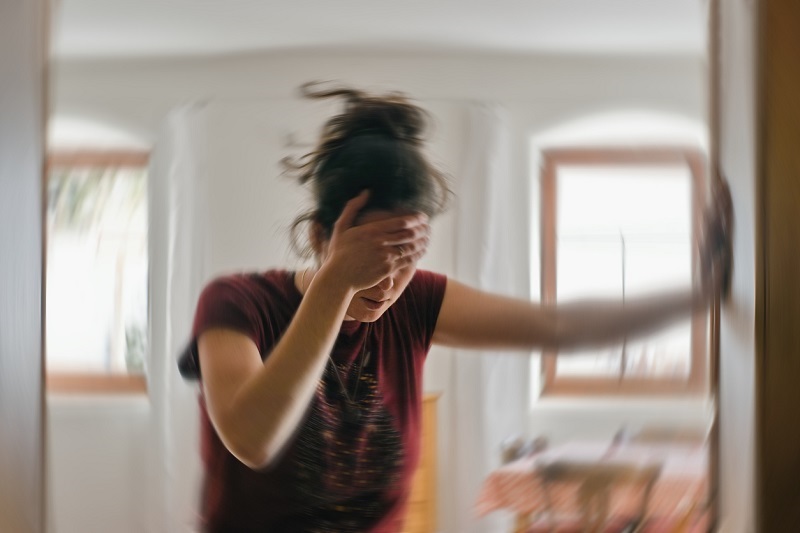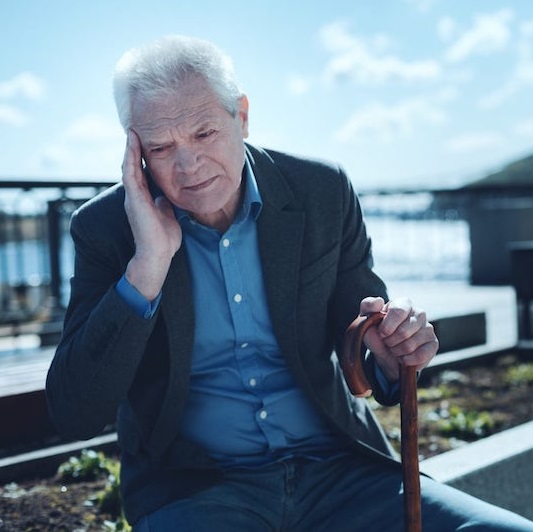Vertigo & Balance: How to Fix Ear Crystals

November 20, 2023
Experiencing vertigo or feeling unbalanced can be unnerving and frightening, and in some cases, extremely disruptive to everyday life. While there can be some serious causes for this, it may also simply be dislodged ear crystals. What are ear crystals, and how do they cause vertigo?
What Are Ear Crystals?
Ear crystals are made up of calcium carbonate and are found in the inner ear. They usually rest on a gel membrane. However, they can occasionally become dislodged and wreak havoc on your daily life.
How Do Ear Crystals Cause Vertigo?
“The inner ear is a complex organ responsible for not only hearing but balance,” says Robert S. Lebovics, M.D., an otolaryngologist at JFK University Medical Center.
- There are three canals encased in the temporal bone.
- Each canal has a tiny amount of fluid that when moved, stimulates nerve endings and signals to the brain that the body is in motion.
“When an ear crystal is dislodged, it can disturb this fluid and thus causes the brain to interpret motion falsely—which is vertigo,” Dr. Lebovics says.
How Do I Get Diagnosed with Ear Crystals?
If you experience vertigo issues, your doctor will need to do a thorough evaluation to determine the cause.
While the general population uses the terms vertigo and dizziness interchangeably, they are actually medically different.
“Vertigo is an issue in the ear or the brain and is about the motion we sense,” says Dr. Lebovics. “Dizziness, on the other hand, can be caused by a variety of metabolic reasons, such as blood sugar level, blood pressure, medication, pain, dehydration, etc.”
Due to such a wide range of possibilities and people not understanding the difference between vertigo and dizziness, it’s important for your doctor to make a detailed evaluation. However, if your doctor does believe you are suffering from vertigo, they may perform a simple diagnostic test called the Dix-Hallpike maneuver to confirm.
The Dix-Hallpike maneuver is performed in two simple steps:
- The person’s head is turned 45 degrees to one side while they are sitting up.
- The patient is quickly laid backward with the head over the edge of the examination table.
This movement can often bring on the vertigo and your doctor will be able to see the eye jerking pattern called nystagmus which occurs when your inner ear balance mechanisms are affected.
How Do I Treat Ear Crystals?
“The simplest approach to treating ear crystals is the Epley maneuver. This involves turning the head in a way that helps float the crystals out of the ear canal,” Dr. Lebovics says. Unfortunately, ear crystals are likely to happen again if you’ve experienced them once, so you may need to do repeat treatments.
Medications to suppress nerve response may be used to help treat initial symptoms before you have a definitive diagnosis to decrease nausea or other disruptive vertigo symptoms.
Ear crystals are more likely to happen with age, and unfortunately, according to Dr. Lebovics, “To my knowledge, there are no preventative methods available, but dislodged ear crystals aren’t terribly common.”
Next Steps & Resources:
- Meet our source: Robert S. Lebovics, M.D.
- To make an appointment with an otolaryngologist near you, call 800-822-8905 or visit our website.
- Learn more about ear, nose and throat services at Hackensack Meridian Health.
The material provided through HealthU is intended to be used as general information only and should not replace the advice of your physician. Always consult your physician for individual care.






